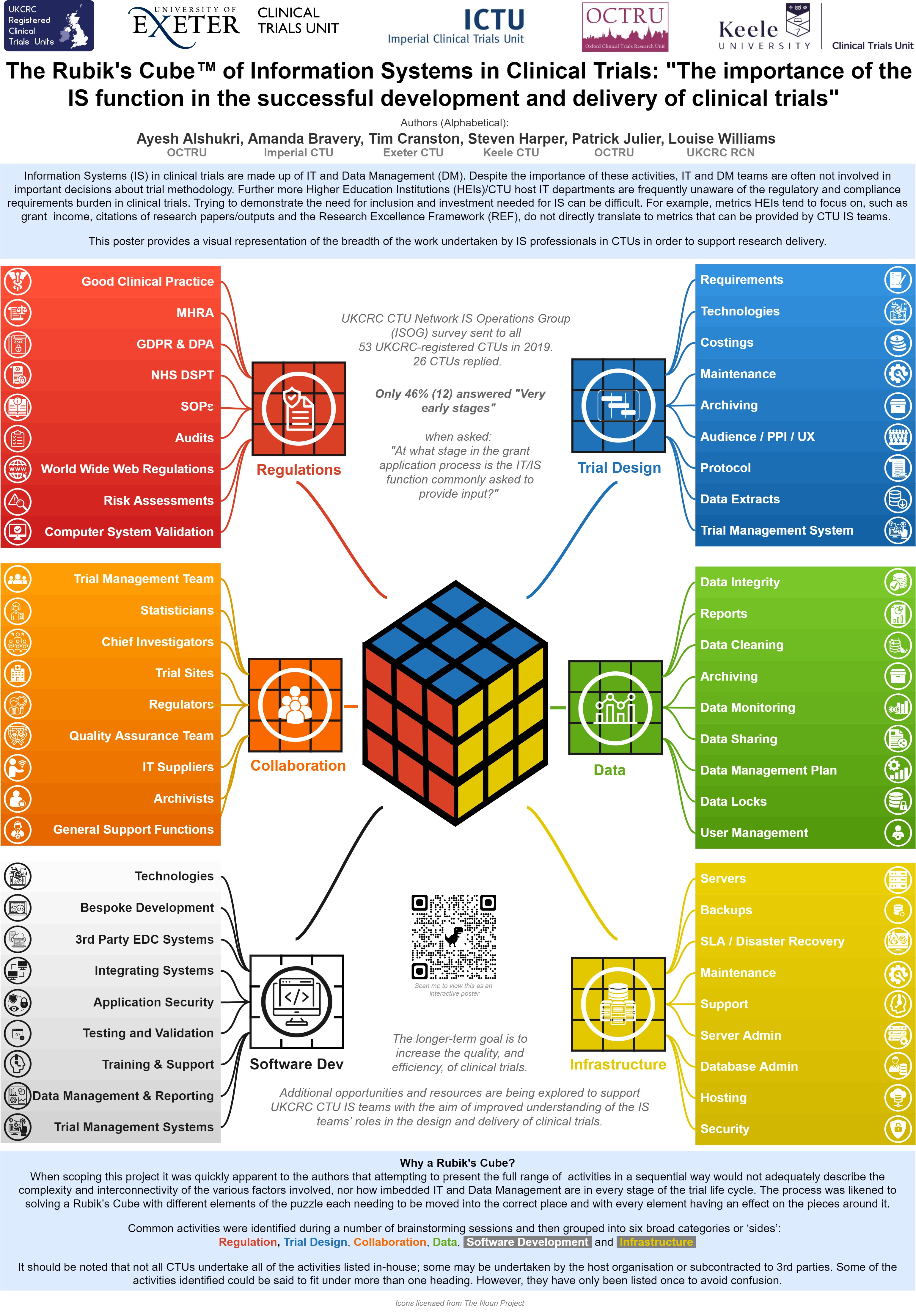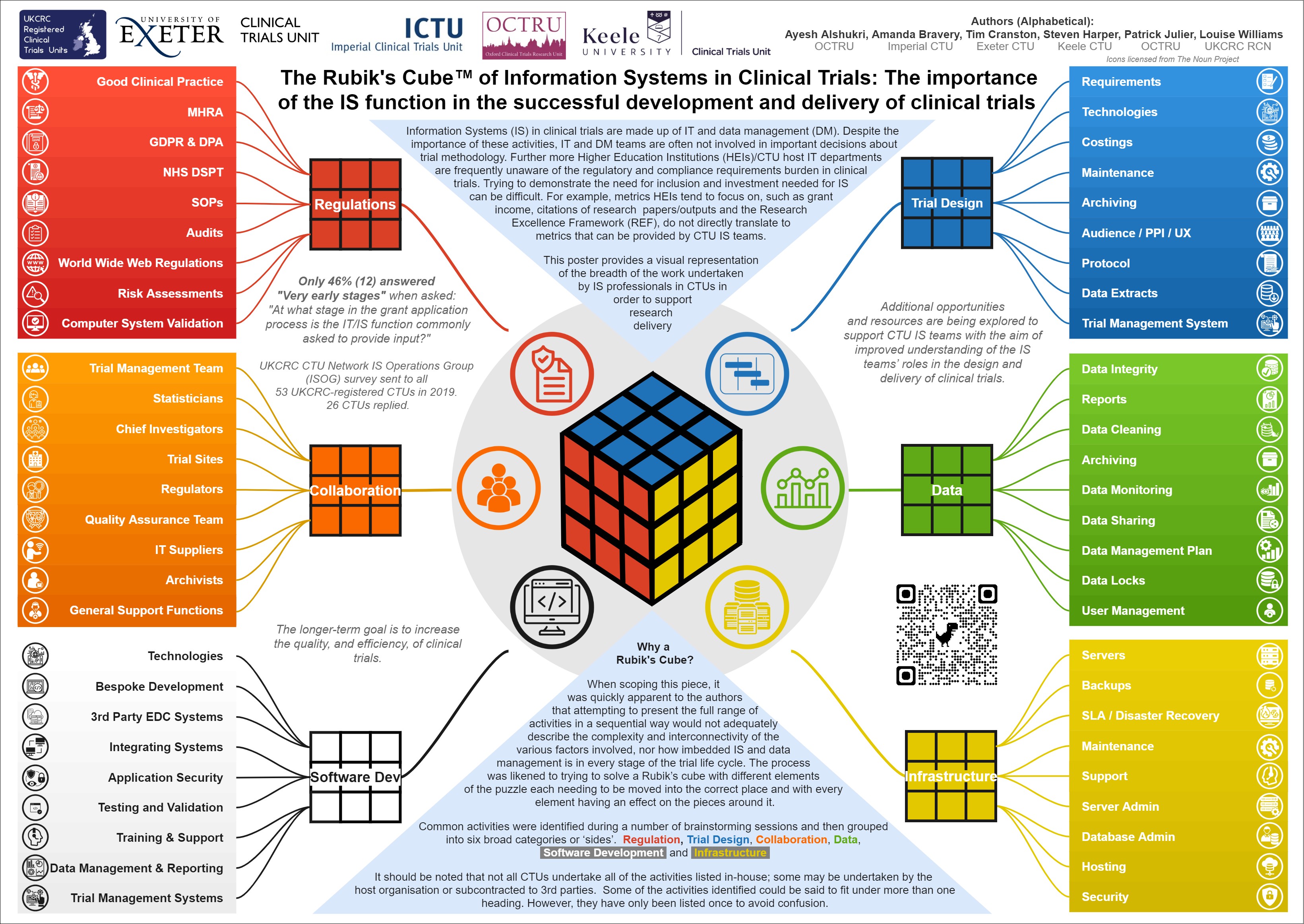Information Systems (IS) in Clinical Trials Units (CTUs) includes activities undertaken by IT and Data Management (DM) teams. Despite the importance of these activities, IT and DM teams are often not involved in important decisions about trial methodology. In 2019, the UKCRC CTU Network IS Operations Group (ISOG) sent out a survey to all 53 UKCRC-registered CTUs, asking what services were provided by CTU IS teams. One of the questions was “At what stage in the grant application process is the IT/IS function commonly asked to provide input?”. Less than half (12; 46%) of the 26 CTUs answering this question replied “Very early stages”.
Furthermore, Higher Education Institutions (HEIs)/CTU host IT departments are frequently unaware of the regulatory and compliance requirements burden in clinical trials. Trying to demonstrate the need for inclusion and investment needed for IS can be difficult. For example, metrics HEIs tend to focus on, such as grant income, citations of research papers/outputs and the Research Excellence Framework (REF), do not directly translate to metrics that can be provided by CTU IS teams.
In 2021, the UKCRC ISOG set up a working group to look at the perceptions of IS in clinical trials, exploring ways to support IS teams and help communicate the value IS teams provide. It was quickly apparent to the working group that attempting to present the full range of IS activities in a sequential way would not adequately describe the complexity and interconnectivity of the various factors. The process was likened to ‘solving a Rubik’s Cube’ with different elements each needing to be moved into the correct place and every element effecting the pieces around it. Common IS activities were identified during several brainstorming sessions and then grouped into six broad categories: Regulation, Trial Design, Collaboration, Data, Software Development and Infrastructure. These categories were agreed by the ISOG group and the initial outputs of a “Rubik's Cube of IS in Clinical Trials” poster and corresponding slides were provided to UKCRC-registered CTUs for onward dissemination.
Additional opportunities and resources are being explored to support CTU IS teams with the aim of improved understanding of the IS teams’ roles in the design and delivery of clinical trials. In the longer-term, this should increase the quality, and efficiency, of clinical trials.
Interact with the Rubik's Cube to explore components and see how easily changes have knock on effects.
Click and drag around the outside the cube to spin the cube to view all faces.
Click and drag cubelets within the cube to rotate rows and columns.
It should be noted that not all CTUs undertake all of the activities listed in-house; some may be undertaken by the host organisation or subcontracted to 3rd parties.
Some of the activities identified could be said to fit under more than one heading. However, they have only been listed once to avoid confusion.

